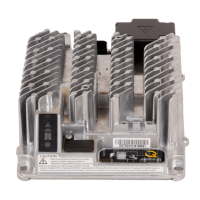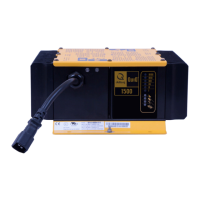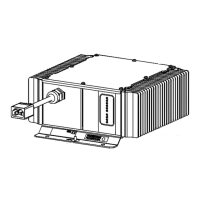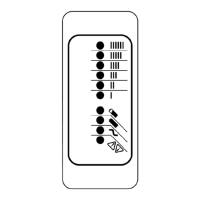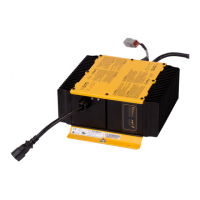11
5.2 Charger Touch Temperatures
The IC650 Charger will feel hot to the touch, especially during the bulk phase of charging. These
temperatures do not pose a risk to the charger, and are a sign of the eectiveness of the heat-rejecting
ns in keeping internal component temperatures low. The two hottest spots while the charger is actively
charging a battery pack are on the left and right sides of the charger. In an ambient room temperature of
21°C, expected touch temperatures will range from 73°-76°C (163°-169°F). The maximum allowable touch
temperature to meet safety approval requirements is 95°C (203°F).
If thermal couples are placed at the base of these peak temperature areas, well within the edge of the
charger, you may measure temps that exceed 95°C. However, the charger can be expected to regulate its
output to ensure any surface that can be casually touched does not exceed the 95°C limit. The temperature
on the bottom of the charger should be about 8-9°C (46°-48°F) lower than the hottest temperatures on the
charger sides when operating at maximum output.
Battery temperature sensors are available to be attached the the blade terminals, C1 and C2, within the DC
block. The other end of the battery temperature sensor is attached to any battery post that is convenient,
preferably the one that will become the hottest. Some, but not all, Delta-Q charging algorithms use
temperature compensation. See the “DC Output” section for more information.
Figure 7. IC650 right side. The highest touch will
temperatures occur between the cooling ns.
Figure 8. IC650 right side close-up. The highest
measured temperature in this area is 74
°C (165°F).
Figure 9. IC650 left side. The highest touch will
temperatures occur between the cooling ns, on the
left side of this picture.
Figure 10. IC650 left side. The highest measured
temperature in this area is 77
°C (170°F).
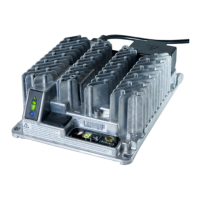
